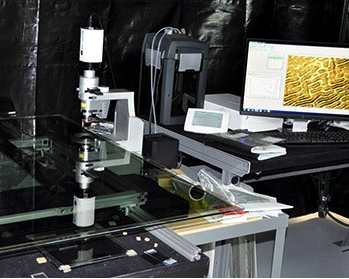Members Login

Channels
Special Offers & Promotions
Going green
Market leaders in temperature controlled microscopy, Linkam Scientific Instruments report on the use of their PE120 stage and Imaging Station in the development of smart energy windows at RavenBrick LLC in the USA.
Since 2006, a small start-up solar technology company, RavenBrick based in Denver, Colorado, has been working on various processes to take them to the forefront of the booming solar technology market through helping builders and architects respond to the energy challenges of the future with green building materials. The company manufactures smart windows which use thermochromatic filter technology to help regulate the temperature of a building by saving energy costs and reducing glare from sunlight. These windows automatically control the amount of light, heat and glare that passes through the glass by using a special set of filters made of liquid crystals that change phase depending on the amount of solar energy exerted on them. The use of these filters allows for the windows to smoothly transition from a clear state to a tinted state when the external conditions necessitate the need for this. As more and more companies and homeowners are pushing to become greener, for both the environmental and economic benefits, it seems very likely that more research and investment into these smart windows will become essential in the next generation of energy efficient construction solutions.
RavenBrick’s R&D manager, Dr Wilder Iglesias, has been using a Linkam PE120 system including an Imaging Station and Linksys 32 software to help with the manufacture and advancement of products. With this simple-to-use thermoelectrically cooled stage, he is able to study the quality and refine the composition of the liquid crystals that are used in their windows. Speaking of his work, Dr Iglesias says “My company, RavenBrick LLC, manufactures smart windows based on liquid crystal (LC) technology. The window tints if the temperature is too hot, blocking solar energy from penetrating the building/house and clears when the temperature is low, allowing the sun energy to heat up the building. The tinting of our windows depends on the LC phase sequence, thus we use the Linkam stage for two purposes: One is to qualify incoming liquid crystal material and two, for finding the right mix of LC to have the appropriate phase transitions depending on the weather profile of the place of installation and/or comfort factor from the customer.”
Aside from the stage, Dr Iglesias and his team have also found the Linksys32 software to be invaluable to their research. “I love the Linksys32 software and the way it presents the information for past runs. Being a software developer for this type of instruments, I really appreciate the simplicity and how powerful the Linksys32 software is.”
He added: “In some sense we use the Linkam system as a visual differential scanning calorimeter (DSC), by monitoring the intensity changes on the Real Time Chart of the Linksys32 software, where a large intensity variation implies a phase transition on the material.”
About Linkam Scientific Instruments
Linkam develops and manufactures a broad range of heating and freezing stages for both OEM and end users to visualize and explore materials properties. Used in conjunction with light microscopes and other forms of spectroscopy, Linkam stages are found in thousands of laboratories worldwide with the most successful microscope heating stage, the THMS600, selling over 4,000 units alone. Linkam is the market leader in temperature controlled microscopy.
Media Partners



